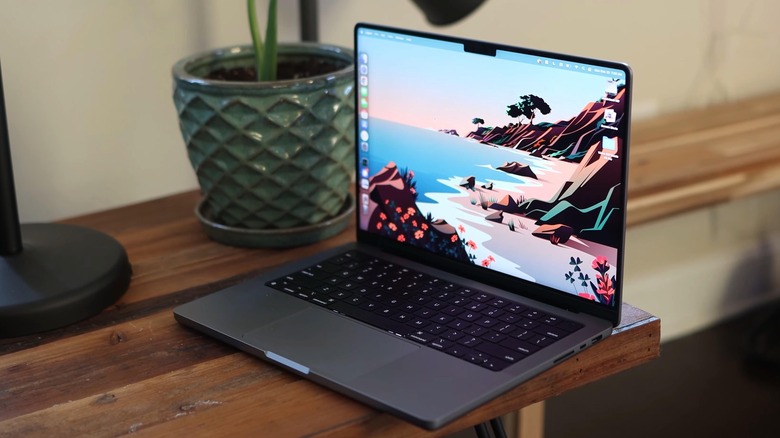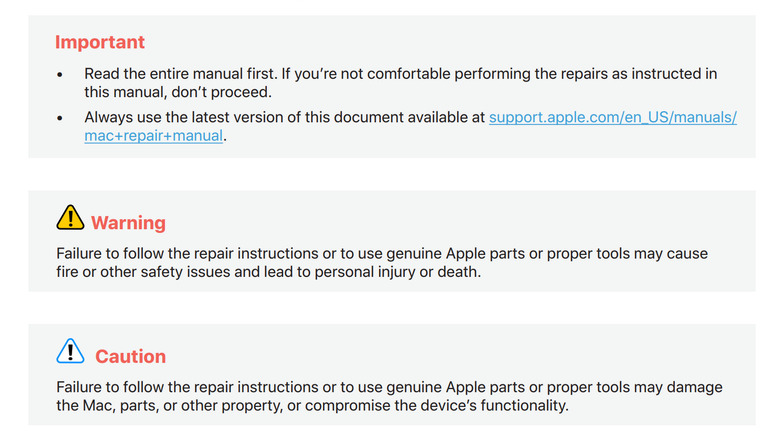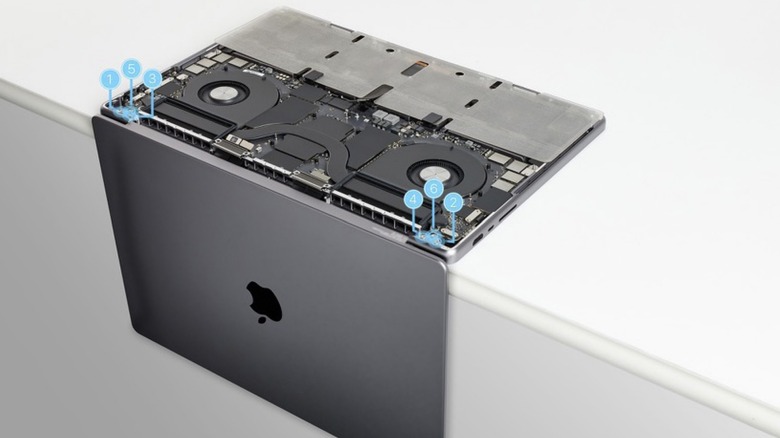Apple's Self-Repair Program For MacBooks Might Be Creating More Problems Than It Solves
Apple has finally expanded the self-service repair program to cover MacBooks with the M1 chip, after keeping it limited to iPhones for a healthy few months. The core idea is to let users repair their misfiring MacBook on their own by referencing the official instruction manual, buying parts directly from Apple, leasing the repair kit, and saving the repair costs in the process that would otherwise go into Apple's or a technician's pockets.
But an iFixit analysis suggests that repairing a compatible MacBook is neither really a cakewalk from a technical standpoint nor is it exactly easy on the pockets. To begin, the repair manual for the 14-inch MacBook Pro spans 162 pages, and it starts with an intimidating instruction right on the third page. "Read the entire manual first. If you're not comfortable performing the repairs as instructed in this manual, don't proceed."
To make things worse, the actual repair and replacement steps proceed all the way up to the 162nd page. But that's not the end of it. Once the parts have been put in their designated place, users need to go through the system configuration process, which involves the crucial process of matching part numbers. If parts don't match, vital systems might be rendered non-functional.
A daunting journey, through and through
The instruction manual would have been a lot more condensed if the battery replacement chore was only about replacing the battery. Instead, users have to go through the arduous process of opening the entire top lip, removing the keyboard assembly, and going past a ton of other parts before they can access the actual battery cell. As per the instruction manual, putting a fresh battery in its place will also require users to reinstall the Touch ID board, USB-C parts, MagSafe assembly, fan, audio component, display, display, display hinge covers, logic board, antenna module, trackpad circuitry, lid angle sensor, battery flex cable, and the bottom case.
It is somewhat infuriating to see that Apple doesn't sell the battery separately — at least not at the moment. For now, you will have to splurge cash on the entire package that Apple calls "Top Case with Battery and Keyboard." As the name makes it abundantly clear, you are paying for a spare top case and keyboard parts even if you only want to replace the battery on your pricey MacBook Pro. Naturally, it doesn't come cheap. As per Apple's own store listing, the whole assembly is priced in the $500 ballpark.
This isn't customer-friendly at all
Apple tells The Verge that it will sell the battery module separately in the future, but that's not where the hit on customers' wallets ends. Next in line is the additional cost of leasing the repair equipment and the pressure of finishing the DIY repair journey within two weeks, or you risk losing the deposit amount. iFixit claims that "Apple is presenting DIY repairers with an excruciating gauntlet of hurdles."
It's not hard to figure out why iFixit is arriving at such a conclusion. Going through a 162-page technical document is already a daunting task. For those brave enough to handle the brain exercise, they will have to spend nearly half a grand to get started by paying for additional parts that don't need a replacement at all thanks to Apple's weird design choice.
Then there's the risk of screwing up at one of the steps and making things worse during the DIY repair process. Most customers would simply pay the extra fee to get things fixed at an authorized repair outlet, which ultimately begs the question of whether Apple really wants to cultivate a culture of self-service DIY repairs for its pricey hardware in the first place.


